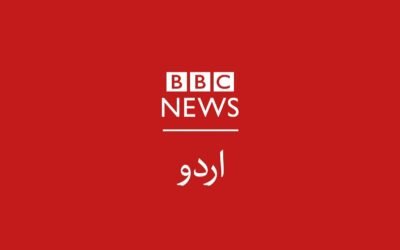AP coverage often emphasizes disasters (floods, explosions, political instability) and security concerns (terrorism, Chinese workers’ safety). Stories of how ordinary Pakistanis help each other, community resilience, and local NGOs providing relief rarely get equal space. This skews global perception toward “Pakistan as a crisis country.”
Let’s see what they reported in the past week,
Pakistan, China, and Afghanistan hold a high-level meeting in Kabul to boost cooperation.
Date: August 20, 2025
Pakistan’s Foreign Minister Ishaq Dar, Chinese Foreign Minister Wang Yi, and Taliban officials met in Kabul to enhance collaboration on trade, transit, regional development, healthcare, education, cultural exchanges, and fighting drug trafficking. A key outcome was the decision to extend the China-Pakistan Economic Corridor (CPEC) into Afghanistan, strengthening regional connectivity and infrastructure. The meeting follows a similar dialogue in Beijing earlier this year.
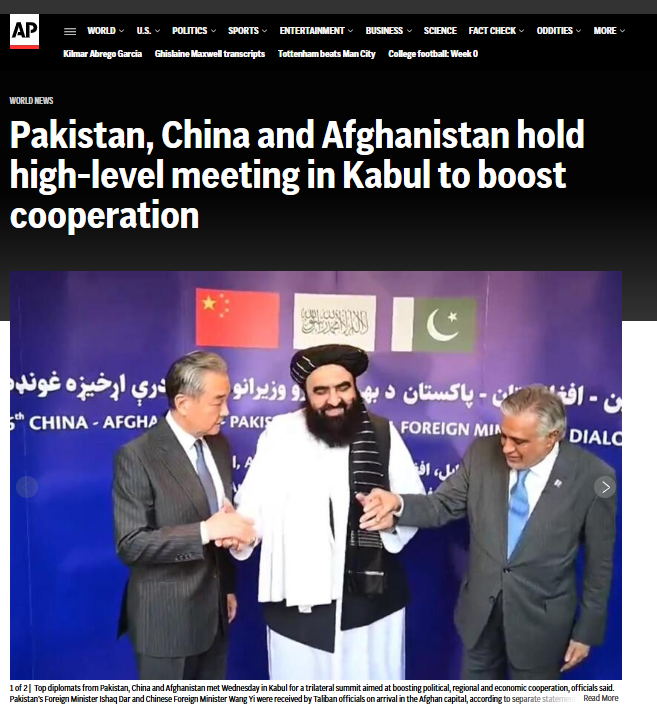
Image Credit: AP News
China and Pakistan foreign ministers agree to launch new economic corridor projects.
Date: August 21, 2025
In Islamabad, Wang Yi and Ishaq Dar pledged to initiate new projects under CPEC, though specific details remain undisclosed. They also agreed to bolster cooperation in science, technology, industry, and agriculture. Wang emphasized the importance of security for Chinese personnel in Pakistan, particularly in insurgency-threatened areas like Balochistan, prompting Pakistan to ramp up protective measures.
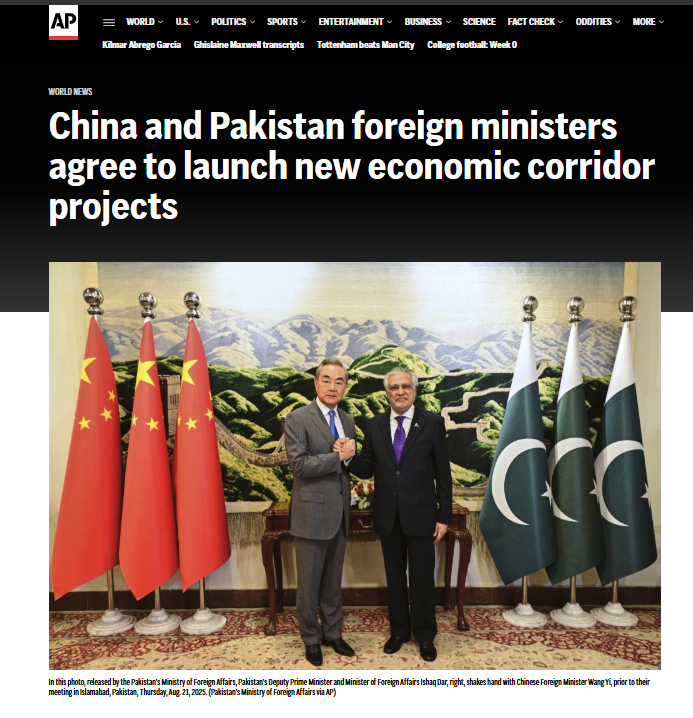
Image Credit: AP News
Explosion at Pakistan fireworks storage facility injures at least 25 people.
Date: August 21, 2025
A powerful explosion at a fireworks storage facility in Karachi’s southern port district injured at least 25 people, some critically. The blast damaged nearby shops and vehicles, with shattering glass and thick smoke. Emergency teams responded promptly, extinguishing the fire and transporting the injured to hospitals. The cause of the explosion remains unclear.
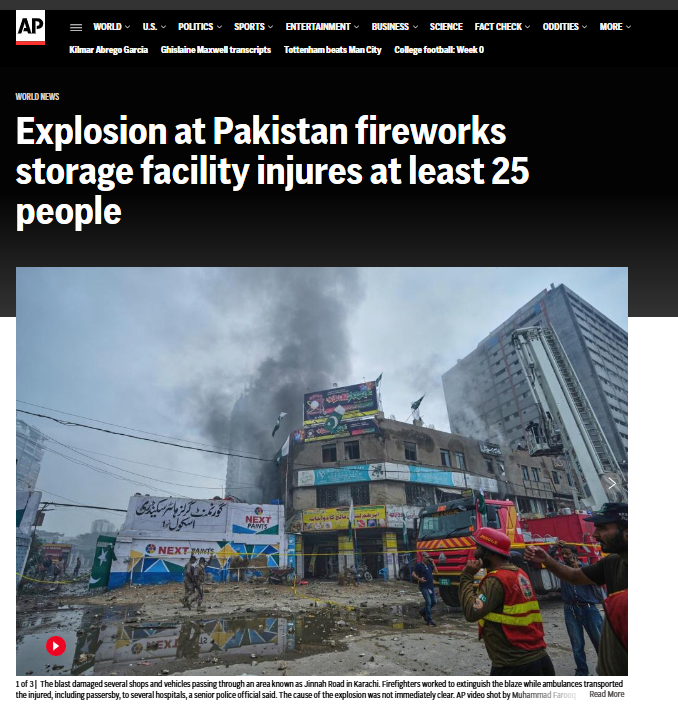
Image Credit: AP News
Pakistan will not restrict mountaineering expeditions despite recent deaths.
Date: ~August 18–19, 2025 (published within the past week)
Despite recent fatalities—including the death of Chinese climber Guan Jing on K2—Pakistan will not impose restrictions on mountaineering expeditions in Gilgit-Baltistan. Government spokesperson Faizullah Faraq noted that climbers accept the significant risks involved and stressed the economic importance of adventure tourism for local communities. The region continues to face increased threats from flash floods and landslides driven by intense monsoon rains.

To provide a fuller picture of the situation during this period, here are other AP-related updates (though not all are standalone news articles, but they enrich understanding):
Pakistan defends flood response after over 270 people killed in a northwest district
Rescue efforts in Buner district recovered dozens of bodies, bringing the death toll to at least 274. Officials insisted foreign aid wasn’t needed at the moment.
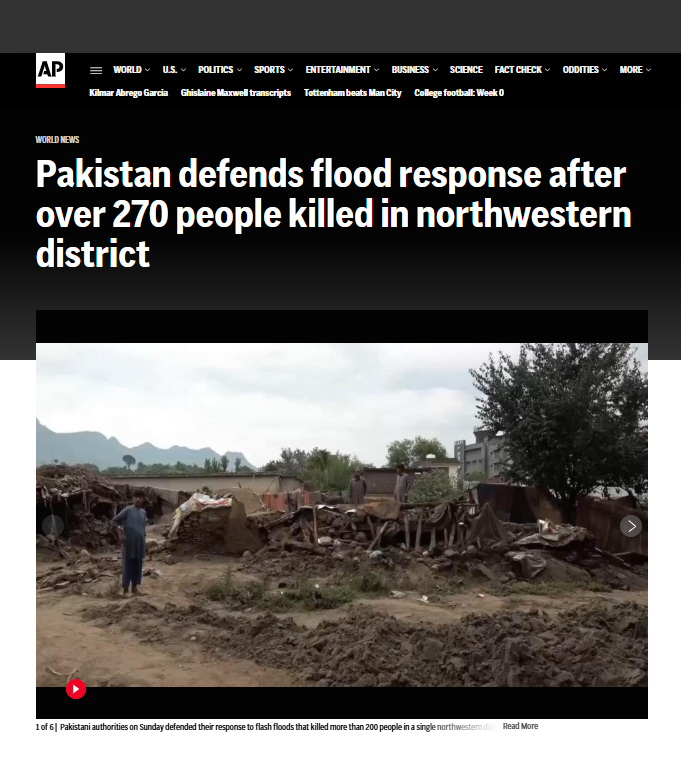
Image Credit: AP News
Northwest Pakistan flooding leaves over 150 people still missing
The death toll rose to 277 as communities continued searching for those swept away. One official controversially suggested that people should have built homes elsewhere.
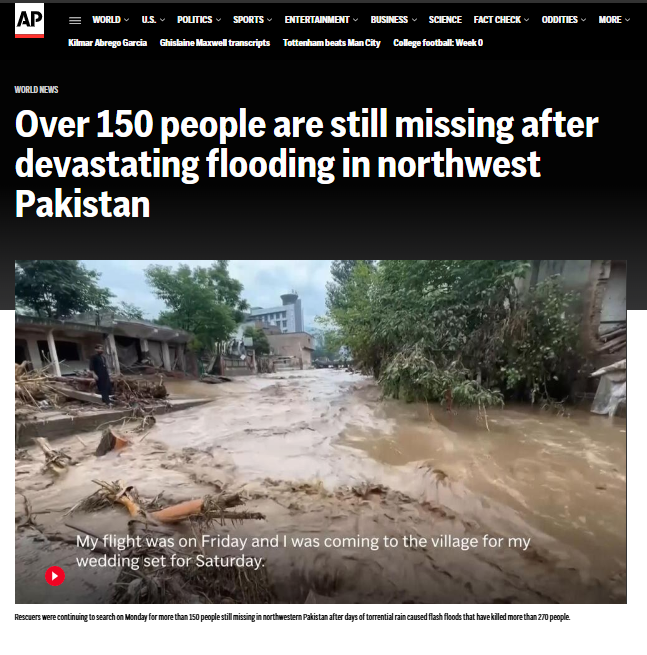
Image Credit: AP News
Pakistan issues flood alert for southern districts as rescuers search for missing in the northwest.
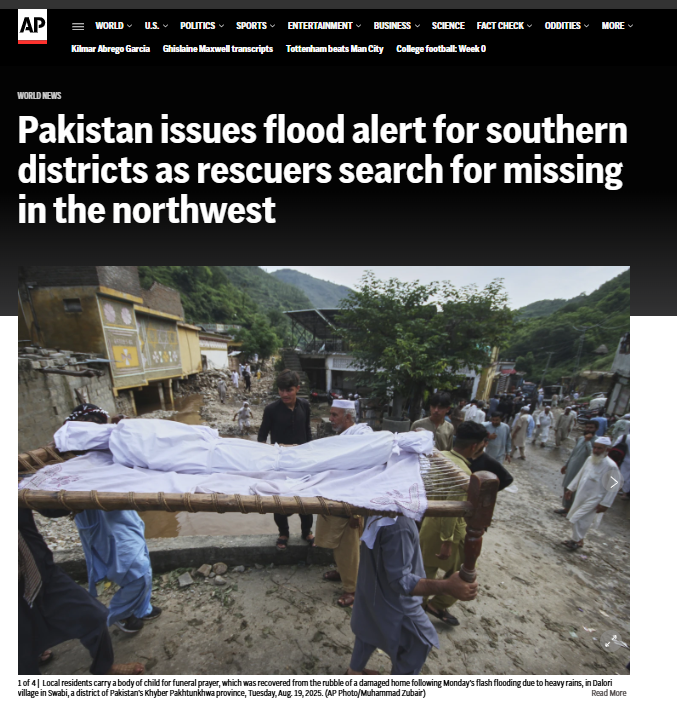
Image Credit: AP News
Authorities alerted southern regions to prepare for floods while rescue operations continued in the north.
You May Like To Read: International Media Bias: How to Strengthen Pakistan’s Global Voice
Cloudbursts are causing chaos in India and Pakistan. Here’s what they are?
Explained what cloudbursts are, why mountainous regions like Buner and beyond are vulnerable, and how climate change is making them more frequent and destructive.
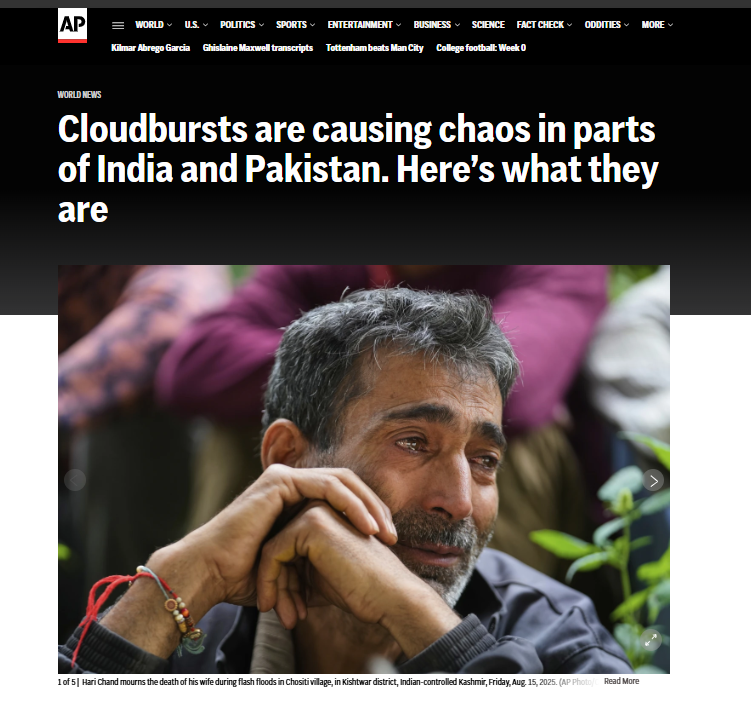
Image Credit: AP News
AP News coverage of Pakistan often emphasizes crises such as floods, explosions, political instability, and terrorism. This creates an image of Pakistan as a country constantly in turmoil. What is often missing, however, are stories about how ordinary citizens come together during these crises. Communities frequently show resilience by helping one another, local organizations step in with relief work, and neighbors share resources during hard times. These acts of solidarity rarely receive the same attention as the disasters themselves, leading to a skewed perception of Pakistan as only a place of suffering rather than resilience.
External Narratives Over Local Voices
Most AP reports rely heavily on official statements from the government, foreign leaders, or international agencies. While these perspectives are important, they overshadow the voices of ordinary Pakistanis. People affected by floods, power shortages, inflation, and violence have their own stories of struggle, courage, and perseverance, but these are rarely centered. This creates a narrative where Pakistan is presented more as a geopolitical player than as a nation of over 220 million people living everyday lives filled with hope, hardship, and resilience.
Geopolitical Framing
When AP reports on Pakistan’s ties with countries like China or Afghanistan, the stories often highlight foreign priorities, such as Chinese concerns about worker safety or strategic infrastructure projects like the China-Pakistan Economic Corridor. Missing from these reports is how such projects actually affect the daily lives of Pakistani citizens. Do they bring jobs, better healthcare, or opportunities for local communities? Instead, the coverage leans toward portraying Pakistan as a pawn in larger global power struggles, rather than focusing on its people’s experiences.
Humanitarian Gaps
Coverage of natural disasters, such as the recent floods, tends to focus on casualty numbers, property damage, and missing persons. While these facts are important, what is often left out is the human side of survival. Families rebuilding homes from scratch, youth volunteers delivering food and medical aid, and communities banding together to save lives are powerful stories that show courage and generosity. By excluding these narratives, international readers are left with an incomplete picture that emphasizes helplessness over human strength and compassion.
Why It Feels Manipulative?
The sense of manipulation comes from how AP selects and frames stories. Words such as “chaos,” “instability,” and “militant threats” are used frequently, reinforcing negative stereotypes about Pakistan. Stories that fit these global narratives are prioritized because they draw attention, while stories of progress, cultural richness, and humanitarian spirit are largely overlooked. This imbalance gives the impression that Pakistan is only defined by its problems, when in reality, it is also defined by resilience, creativity, and generosity in the face of hardship.
In truth, Pakistanis consistently show extraordinary solidarity in times of crisis—opening homes to flood victims, donating blood to blast survivors, and raising funds online for families in need. These actions reflect a nation that is not simply enduring crises, but actively helping its own people. Unfortunately, this is the side of the story that rarely makes it into AP’s reporting.
You May Like To Read: Regulating the Infoscape: PECA, PTA, and Legal Responses to Information Warfare (IW16)






